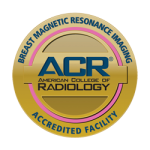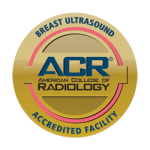Stereotactic Breast Biopsy

Stereotactic breast biopsy uses mammography, (breast imaging) to help locate a breast lump or abnormality and remove a tissue sample for examination under a microscope. It’s less invasive than surgical biopsy, leaves little to no scarring and can be an excellent way to evaluate calcium deposits or tiny masses that are not visible on ultrasound.





What is Stereotactic (Mammographically Guided) Breast Biopsy?
A breast biopsy is performed to remove some cells from a suspicious area in the breast where a lump or abnormality has been detected. These cells are evaluated under a microscope to determine a diagnosis. This can be performed by a radiologist using a less invasive procedure that involves a hollow needle and image-guidance.
In stereotactic breast biopsy, a digital mammography machine uses x-rays to help guide the radiologist’s biopsy equipment to the site of the abnormal growth.
What are some common uses of the procedure?
A stereotactic breast biopsy may be performed when a mammogram or an ultrasound shows a breast abnormality such as:
- a suspicious mass
- microcalcifications, a tiny cluster of small calcium deposits
- a distortion in the structure of the breast tissue
- an area of abnormal tissue change
- a new mass or area of calcium deposits is present at a previous surgery site.
Stereotactic breast biopsy is a non-surgical method of assessing a breast abnormality.
At our facility, we use a vacuum-assisted (VAD) to collect multiple tissue samples during one needle insertion.
How should I prepare?
You will be asked to wear a gown during the exam and remove jewelry, removable dental appliances, eye glasses and any metal objects that might interfere with the x-ray images.
Women should always inform their physician if there is any possibility that they are pregnant. Some procedures using image-guidance are typically not performed during pregnancy because radiation can be harmful to the fetus.
You should not wear deodorant, powder, lotion or perfume under your arms or on your breasts on the day of the exam.
Prior to a needle biopsy, you should report to your doctor all over the counter or prescription medications that you are taking, including herbal supplements, and if you have any allergies, especially to anesthesia. Your physician may advise you to stop taking aspirin or a blood thinner up to 5 days before your procedure. Also, inform your doctor about recent illnesses or other medical conditions.
It is suggested you have a friend or relative accompany you and drive you home after the procedure.
How does the procedure work?
Stereotactic mammography uses digital mammography to pinpoint the exact location of a breast abnormality by using a computer and x-rays taken from two different angles. Using these computer coordinates, the radiologist inserts the needle through a small cut in the skin, then advances it into the lesion and removes tissue samples.
How is the procedure performed?
In most cases, you will lie on your side on a moveable exam table and the affected breast will be positioned and slightly compressed into an opening in the table. The table is raised and the procedure is then performed beneath it. If the machine is an upright system, you may be seated in front of the stereotactic mammography unit.
The breast is compressed and held in position throughout the procedure. Preliminary stereotactic mammogram images are taken.
A local anesthetic will be injected into the breast to numb it and a very small nick in the skin is made at the site where the biopsy needle is to be inserted.
The radiologist then inserts the needle and advances it to the location of the abnormality using the mammogram and computer generated coordinates. Mammogram images are again obtained to confirm that the needle is within the lesion.
At our facility, a vacuum-assisted (VAD), extracts tissue from the breast through the needle into the sampling chamber. Without withdrawing and reinserting the needle, it rotates positions and collects additional samples. Typically, eight to 12 samples of tissue are collected from the lesion.
After the sampling, the needle will be removed. A final set of images will be taken.
A small marker may be placed at the biopsy site so that it can be located in the future if necessary.
Once the biopsy is complete, pressure will be applied to stop any bleeding and the opening in the skin is covered with a dressing. No sutures are needed.
This procedure is usually completed within an hour.
What will I experience during and after the procedure?
You will be awake during your biopsy and should have little discomfort. Most women report little or no pain and no scarring on the breast.
When you receive the local anesthetic to numb the skin, you will feel a slight pin prick from the needle. You may feel some pressure when the biopsy needle is inserted. The area will become numb within a short time.
You must remain still while the biopsy is performed.
As tissue samples are taken, you may hear clicks or buzzing sounds from the sampling instrument.
If you experience swelling and bruising following your biopsy, you may be instructed to take an over-the-counter pain reliever and to use a cold pack. Temporary bruising is normal.
You should contact your physician if you experience excessive swelling, bleeding, drainage, redness or heat in the breast.
If a marker is left inside the breast to mark the location of the biopsied lesion, it will cause no pain, disfigurement or harm.
You should avoid strenuous activity for 24 hours after the biopsy. After that period of time, you are usually able to resume normal activities.
Who interprets the results and how do I get them?
The specimen is sent to a laboratory for final diagnosis. Our radiologist or your referring physician will share the results with you. The radiologist will also evaluate the results of the biopsy to make sure that the pathology and image findings are appropriate.
Follow-up examinations may be necessary, and your doctor will explain the exact reason why another exam is requested and when it should be scheduled.
What are the benefits vs. risks?
Benefits
- The procedure is less invasive than surgical biopsy, leaves little or no scarring and can be performed in less than an hour.
- Stereotactic breast biopsy is an excellent way to evaluate calcium deposits or masses that are not visible on ultrasound.
- Stereotactic core needle biopsy is a simple procedure that may be performed in an outpatient imaging center.
- Compared with open surgical biopsy, the procedure is about one-third the cost. Very little recovery time is required.
- Generally, the procedure is not painful.
- No breast defect remains and, unlike surgery, stereotactic needle biopsy does not distort the breast tissue, possibly making it more difficult to read future mammograms.
- Recovery time is brief and patients can soon resume their usual activities. No radiation remains in a patient’s body after an x-ray examination.
- X-rays usually have no side effects in the typical diagnostic range for this exam.
Risks
- There is a risk of bleeding and forming a hematoma, or a collection of blood at the biopsy site. The risk, however, appears to be less than one percent of patients.
- An occasional patient has significant discomfort, which can be readily controlled by non-prescription pain medication.
- Any procedure where the skin is penetrated carries a risk of infection. The chance of infection requiring antibiotic treatment appears to be less than one in 1,000.
- Depending on the type of biopsy being performed or the design of the biopsy machine, a biopsy of tissue located deep within the breast carries a slight risk that the needle will pass through the chest wall, allowing air around the lung that could cause the lung to collapse. This is an extremely rare occurrence.
- There is always a slight chance of cancer from excessive exposure to radiation however, the benefit of an accurate diagnosis far outweighs the risk.
Please visit www.Radiologyinfo.org for additional information on this procedure.

